Between the 15th and 17th of July, part of Meli’s team visited the Okara Kaapora Project, led by Olinda and Samuel Wanderley, in the Caramuru Paraguaçu Indigenous territoy. During this visit, it was possible to visualize the progress of the ‘Food for good living’ project, understand the region’s challenges, meet community members and learn a little more about the history of the Pataxó Hã-Hã-Hãe people and the Okara Kaapora. Ana Paula and Sílvia share their experience:
Authors: Ana Paula Cipriano e Silvia Lomba
Leia em português
One of those interesting coincidences in life: we were in Bahia at an important moment for the Food for Good Living project, the completion of the work. Olinda and Samuel invited us to go to Pau Brasil and visit the installation area of the project’s community kitchen, which is inside the Okara Kaapora. It was almost 10 hours by bus, but the three days we spent in the community were so worth it! From the beginning of our visit to Pau Brasil, Samuel, an anthropologist who was a strong alliance in the struggles to retake the indigenous land, and Olinda, an indigenous woman from the Pataxó Hã-Há-Hãe people, began to tell us the stories of the area. Mainly because of the lengthy process of reclaiming the territory, which involved a lot of conflicts with farmers from the 1980s until 2012, when the demarcation was completed.
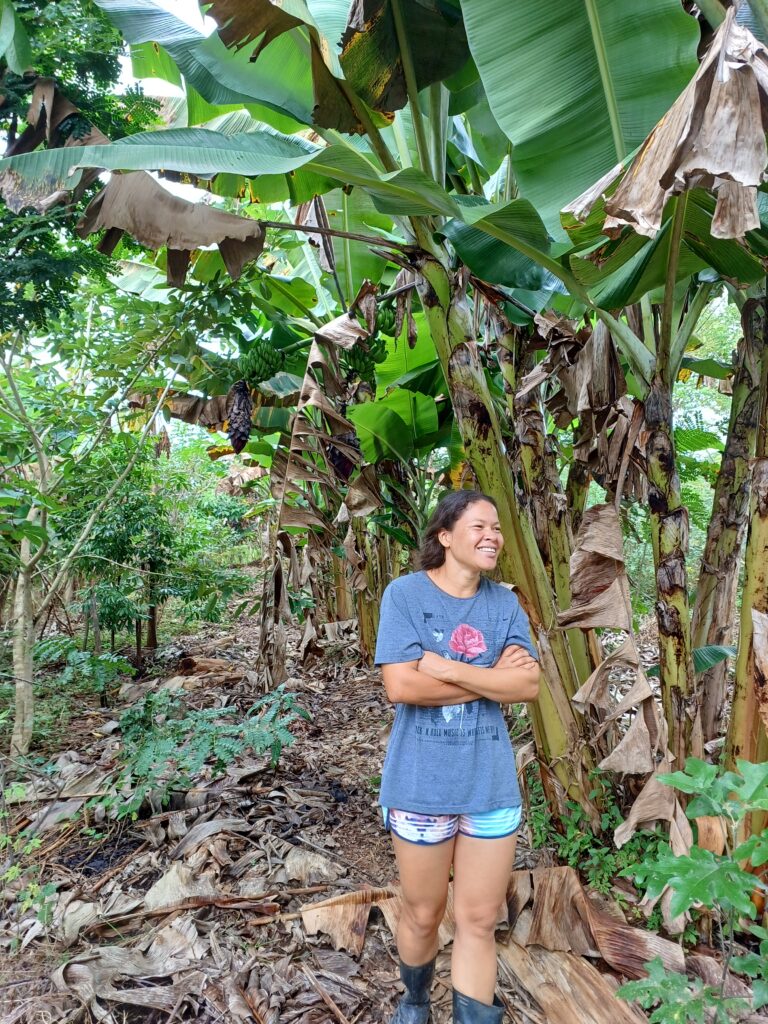
Arriving at the Okara Kaapora project, we noticed the great importance of Olinda and Samuel’s work in the region. Amid cattle pastures and many deforested areas, we have an agroforestry and conserved fragments of the Atlantic Forest, regenerated daily by them. The area used to be a large pasture with tall grass, and grass is a terrible pest, according to Olinda. It grows very fast and prevents the growth of other plants, so to be able to plant anything it is necessary to remove the grass (which is not easy) and plant something that quickly shades the area to prevent the grass from growing again. Olinda and Samuel are not in favor of using pesticides and, therefore, removing the grass ends up being a time-consuming and very expensive task. However, this is not a reason for discouragement and the Okara project is just beginning, Olinda and Samuel have many plans to continue regenerating the area more and more every day and making the indigenous people from their territory aware of the importance of preservation.
The community kitchen of the project ‘Food for good living’ is almost done. The estimated time for construction was initially three months, but in little more than one month only the coatings and painting are missing for the kitchen to be ready for use. Also, the members of Okara are building ramps for accessibility so everyone can roam around the garden outside the kitchen, making the area better each day. The kitchen will be very important to enable a greater range of educational activities that take place
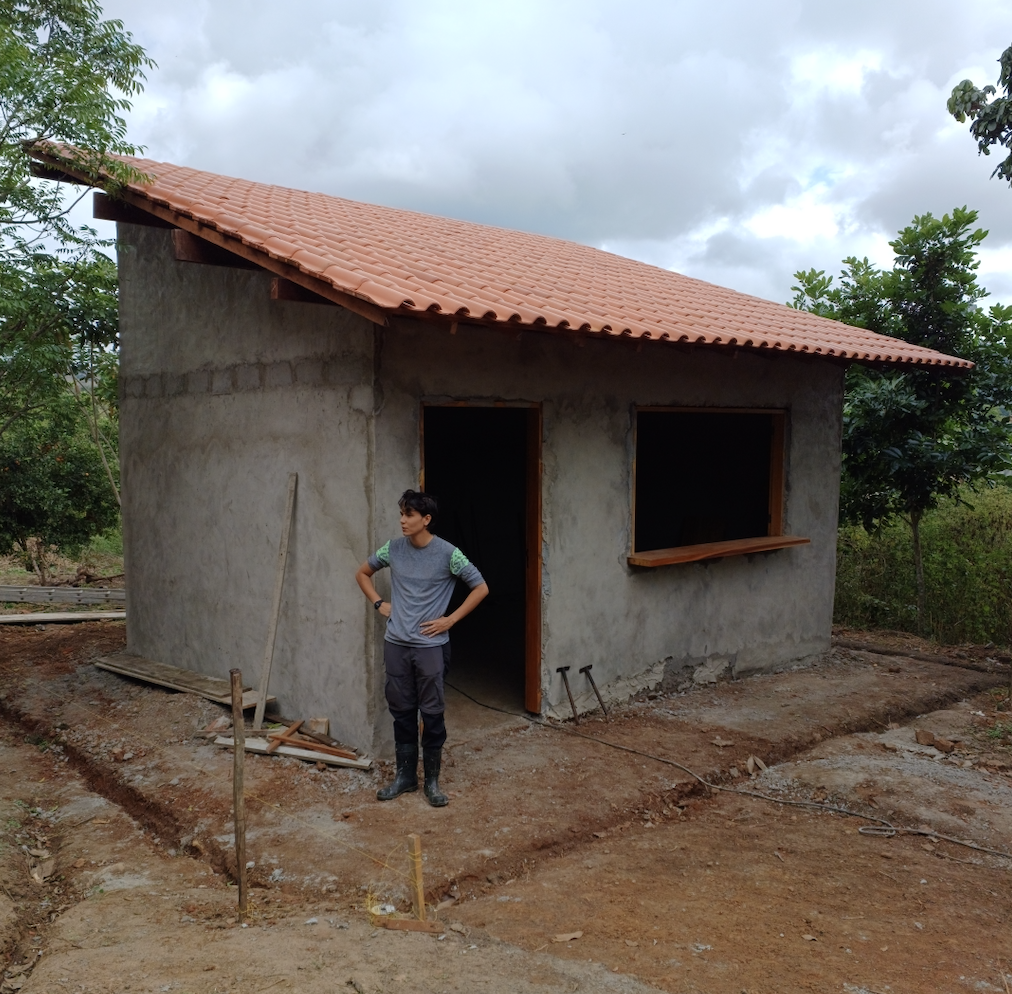
In addition to the Okara Kaapora Project, we also got to know a little about the Caramuru Paraguaçu Indigenous territory. The area has more than 50.000 hectares, and people are scattered throughout the area, following the layout of the farms that were established previously in the region. Therefore, the community kitchen is a meeting space for collectivity to be back in the territory, providing the necessary facilities for all educational and cultural events. Kaapora members have been looking for initiatives and projects that can finance general and transportation costs for the meetings and events they want to hold, allowing the implementation of more activities that engage a larger number of people.
Walking through the various regions of the indigenous land, we were able to meet interesting representatives of the people, such as Maura, an elder of the Pataxó Hã-hã-hãe and leader of several women’s groups. She used to organize various meetings for indigenous women to share ideas and experiences with other peoples.
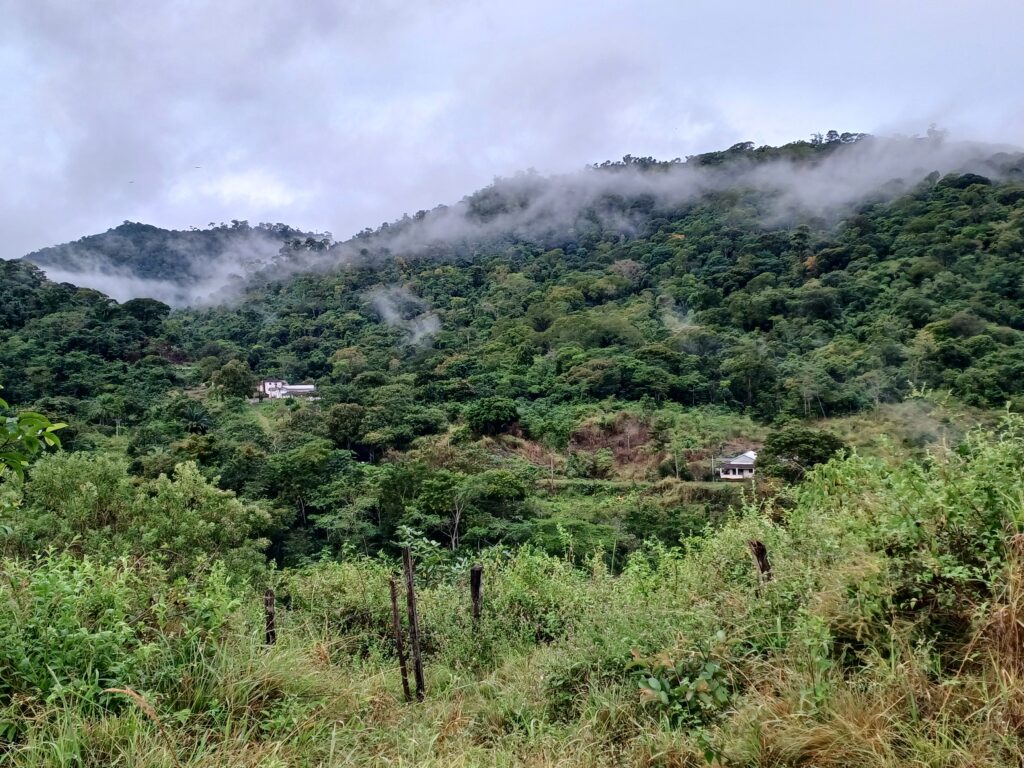
Another person we met was Domingos, Olinda’s uncle and an elder of the Pataxó Hã-hã-hãe people. Domingos has a small agroforestry system and a fragment of the forest in his house. When we were entering his agroforestry, he said very calmly “look, a little snake”. Due to the calmness, we thought it was a non-venomous one, and it was with great astonishment that we saw that it was actually a baby lancehead, but he wasn’t afraid. His next plan is to surround the source of the river that passes near his house, to try to preserve the water in the region. Domingos told us how important it is for the indigenous people to see their role in forest conservation, as each initiative of regeneration makes all the difference.
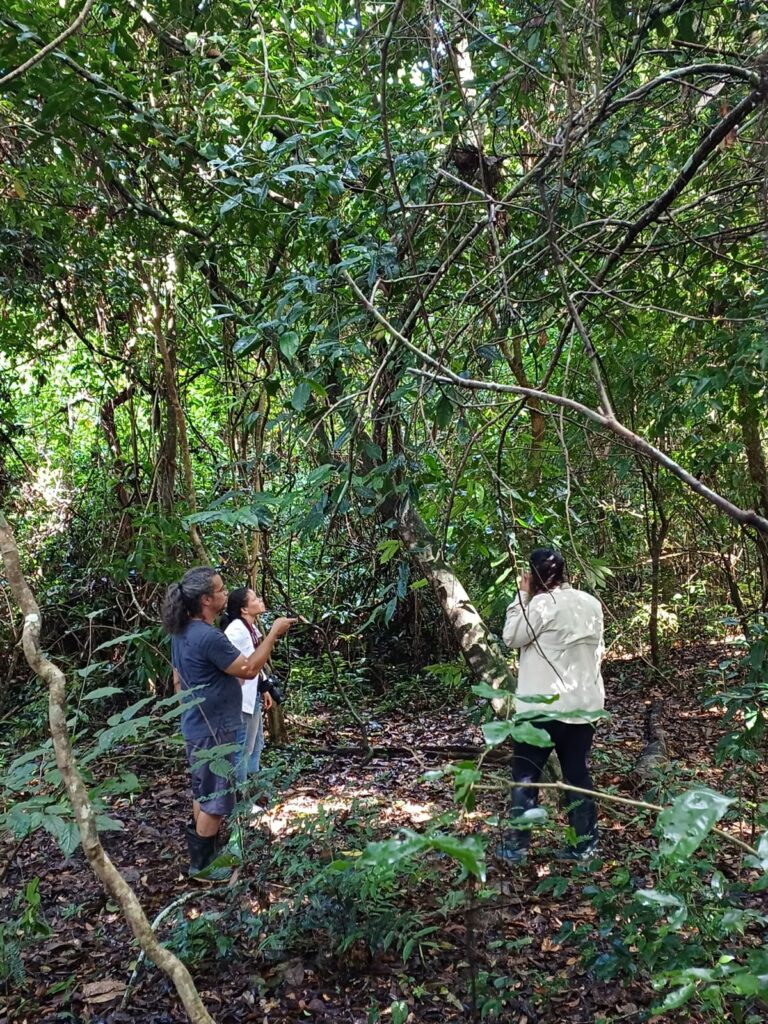
With our visit, we could see that the Okara Kaapora project is essential for the region, having a very large educational role. Some people in the community are engaged with environmental regeneration in the indigenous territory, but they are still the minority. Because it is a region with cattle, implemented when there was still a presence of farmers in this land, before the indigenous retake, the restoration of the Atlantic Forest in the place is a complex and difficult process.
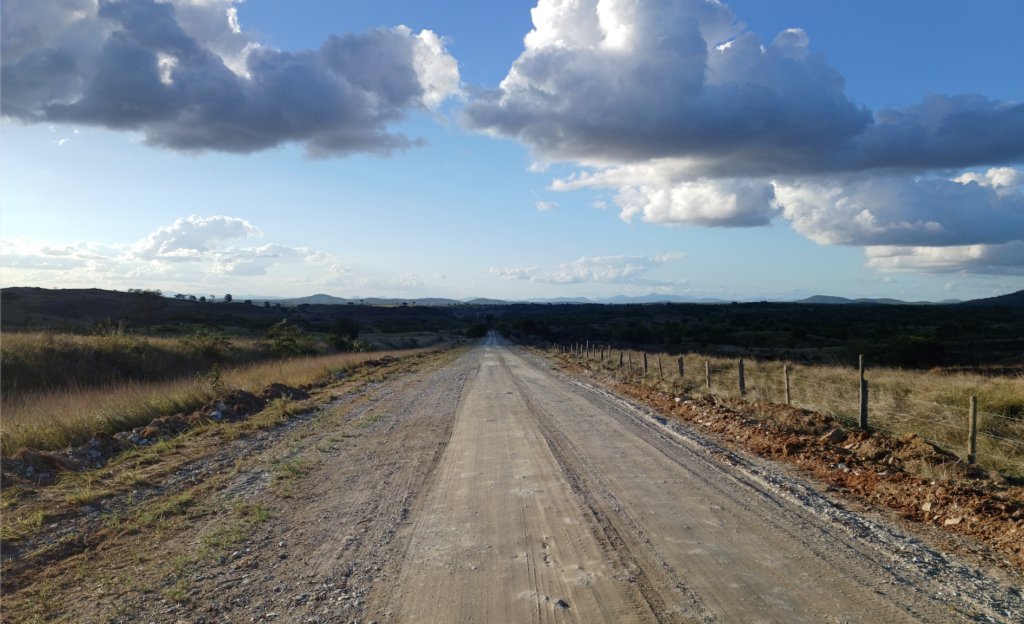
Considering the ease of obtaining loans and credit for raising cattle, the indigenous people end up turning to livestock as a means of subsistence. However, Olinda and Samuel have noticed a change in the way people in the region see preservation over the last few years. At first, people followed what was more common in the region after the invasion of livestock, but today some people are interested in implementing agroforestry systems in their homes. Currently, the biggest impediment for people in the region to implement this type of production system is the lack of financial resources and practical knowledge. In this sense, the role of Olinda and Samuel in the region becomes evident, since both have educational and regenerative project initiatives, mainly with students from the indigenous school, who are the future of the Pataxó Hã-Hã-Hãe people.
The visit was very inspiring and accompanied by many new things, we hope that Okara Kaapora will grow even more, with its cultural and environmental activities. Olinda and Samuel put all their energy into this project, which is a dream come true for them, and they are already seeing results in the people from the territory and from the city as well. Finally, with the community kitchen, we are sure that these activities will become more and more frequent and environmental awareness will be multiplied in the region.
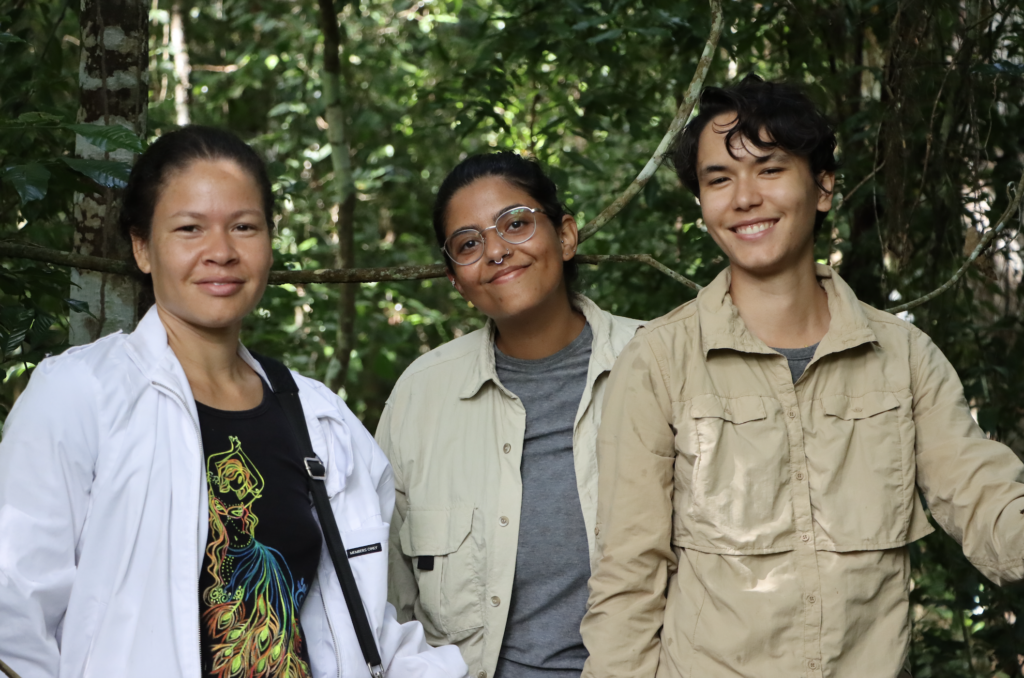
Your donation can impact the world positively!
Subscribe to receive our Newsletter!
Find us also at Linkedin, Facebook, Twitter or Instagram
www.meli-bees.org
❤️
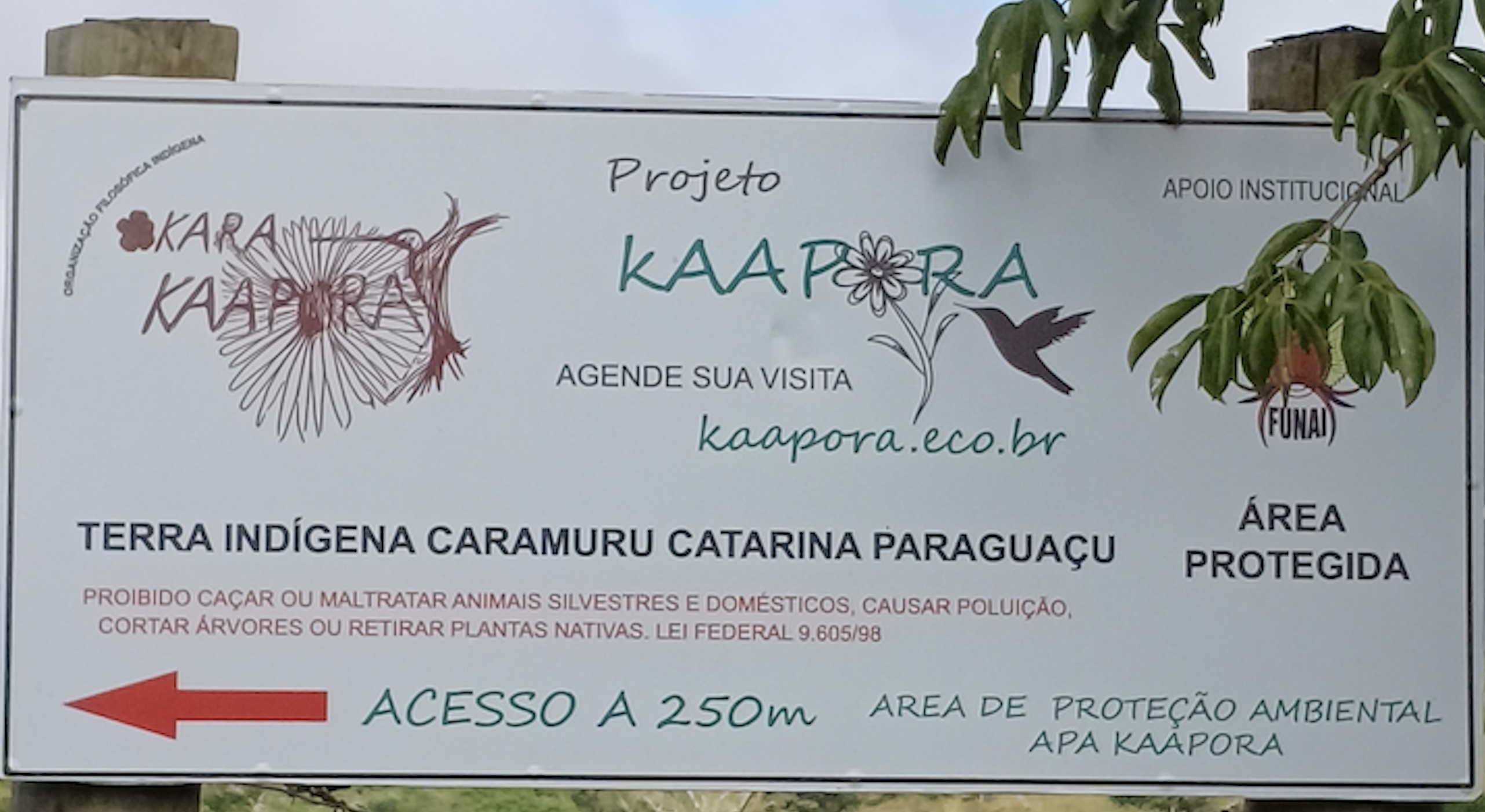
One Reply to “Visit to the Caramuru Paraguaçu Indigenous territory ”